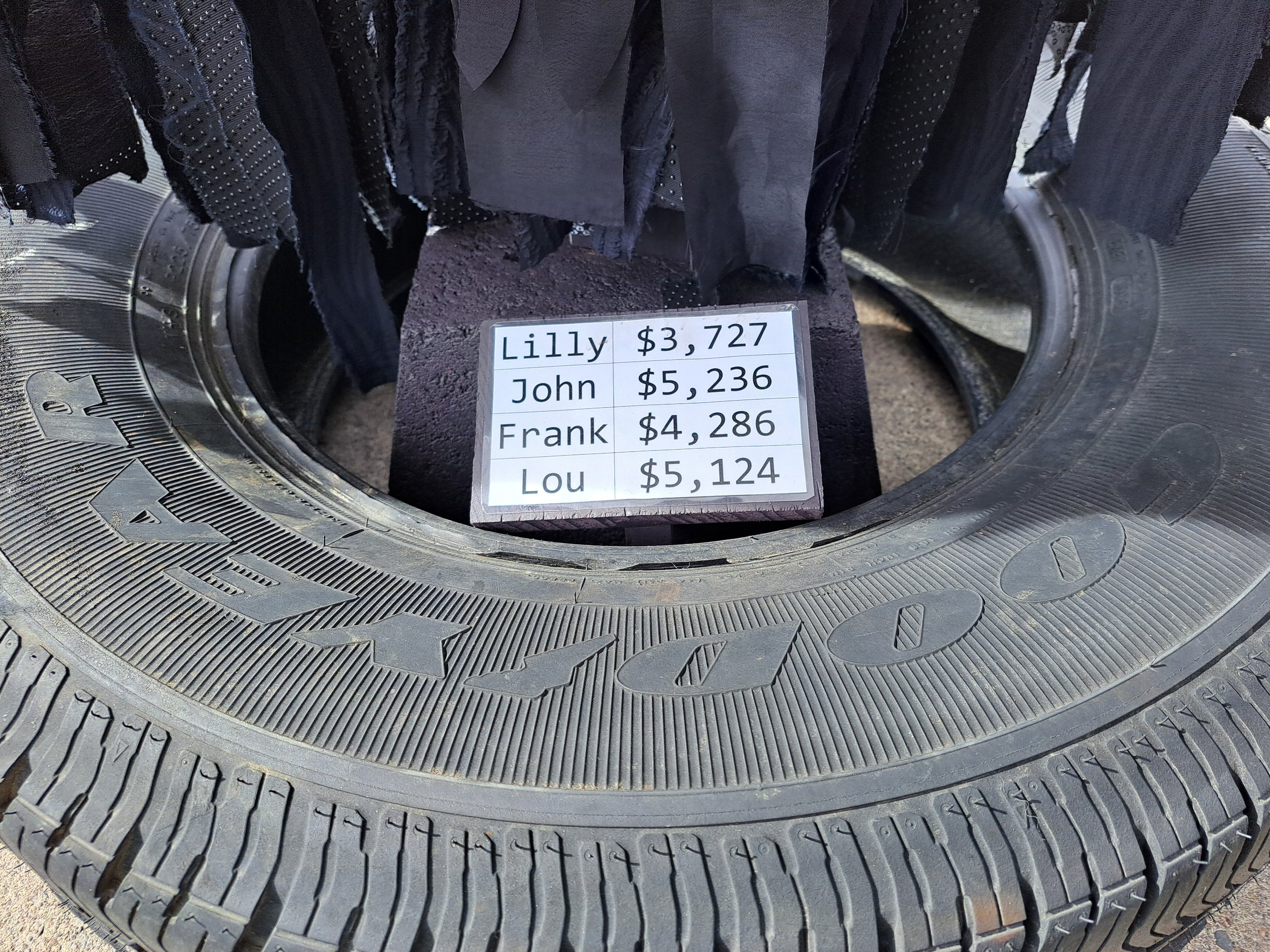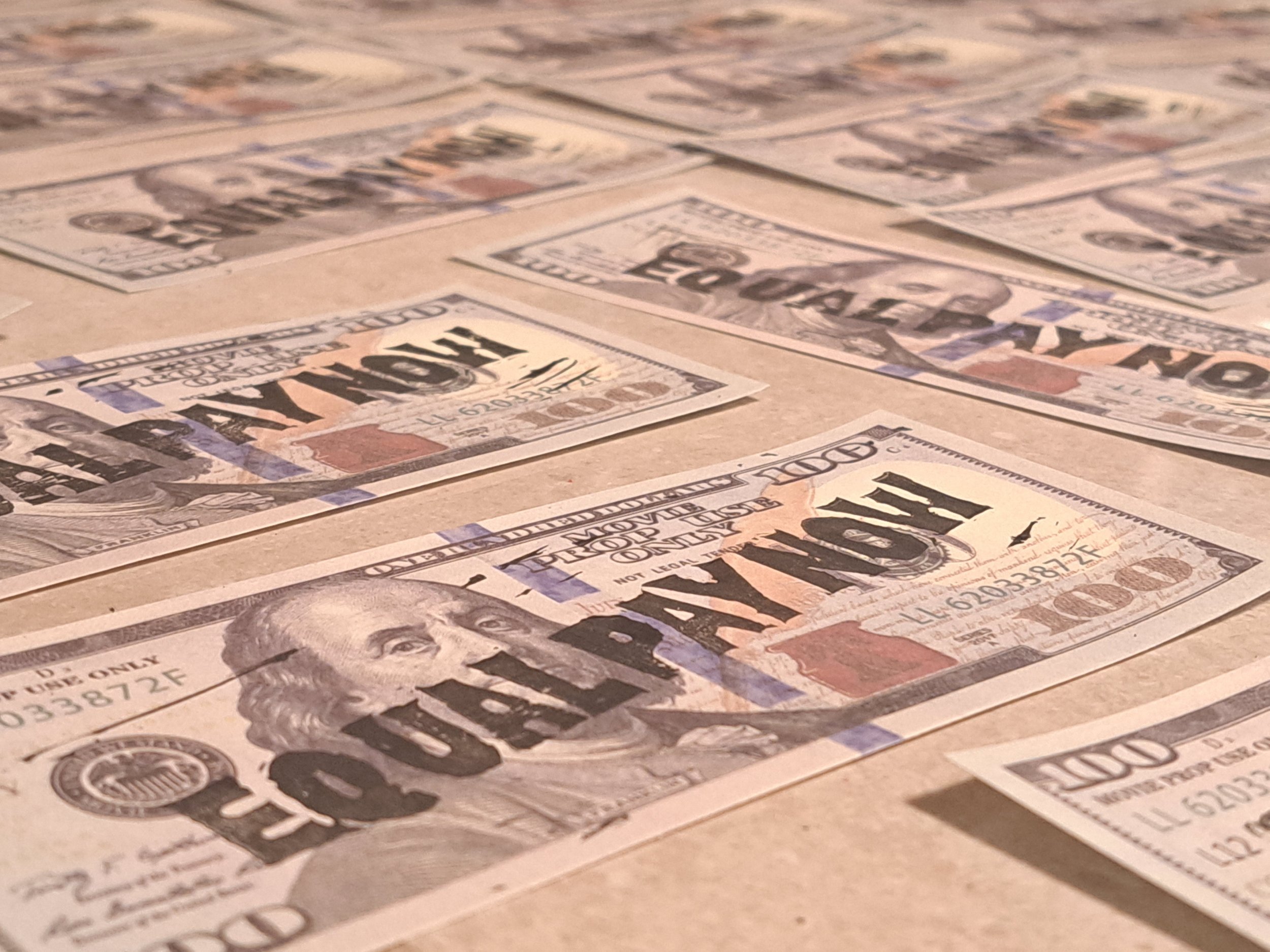
We’re taught from a very young age not to discuss money or salary because it’s bad manners, but in truth, talking about our pay is one of the most powerful tools we have in the fight for equal pay.
Pay secrecy perpetuates pay disparities.
Lilly Ledbetter + Justice Ginsburg Equal Pay Sculpture




The sculpture honors Lilly Ledbetter’s story and her fight for Equal Pay.
In 1997, after 19 years of working at the Goodyear Tire & Rubber Co. in Gadsden, Alabama, Ledbetter received a small slip of paper in her work mailbox. The message revealed that she was being paid nearly 40 percent less than her male coworkers in the same managerial roles.
Ledbetter went on to file a complaint with the Equal Employment Opportunity Commission and her case made it all the way up to the Supreme Court, where the majority held in a 5-4 opinion that Ledbetter should have sued within 180 days of first receiving unequal wages, despite Ledbetter not learning of the inequity for nearly two decades.
In her dissenting opinion, Justice Ginsburg stated, “The court does not comprehend, or is indifferent to, the insidious way in which women can be victims of pay discrimination,” and encouraged legislative action.
Through continued advocacy and inspired by Ginsburg’s dissent, Ledbetter and Congress did just that in 2009: the first piece of legislation that President Obama signed was the Lilly Ledbetter Fair Pay Act.
Read Lilly’s amazing story, written by the talented Lanier Isom: Grace and Grit: My Fight for Equal Pay and Fairness at Goodyear and Beyond.
About the Sculpture
The sculpture’s foundation is a Goodyear tire, where a small slip of paper is affixed, showing a discrepancy in pay. Rising out of the tire is a haunting homage to Justice Ginsburg’s searing dissent of the majority’s ruling against Ledbetter, and the tattered robe of [in]justice of our highest Court.
The piece is a tribute to Justice Ginsburg’s dissent. Letter by letter, passages of the dissent have been hand-stamped into ribbon and incorporated throughout the piece.
Construction
The piece is constructed of tattered fabrics, hand-stamped ribbon, upcycled automotive pieces, wrenches, scrap metal, reclaimed lumber and a used Goodyear tire.
The sculpture pays tribute to the small slip of paper that started an equal pay movement and is an invitation to you to join the movement because the road is long and the work is far from over.

Equal Pay Day takes place on March 12, 2024.
This date symbolizes how far into the year women must work to earn what men earned in the previous year, and the day is meant to raise awareness around the gender pay gap.
The wage gap is even greater for women of color. According to the National Women’s Law Center calculations using U.S. Census Bureau data, the wage gap translates into an annual loss of $22,120 for Black women, $30,450 for Latinas, $28,747 for Native women, and $4,690 for Asian American, Native Hawaiian, and Pacific Islander (AANHPI) women.
Over a 40-year career, the average woman stands to lose out on nearly $400,000. These numbers compound over the course of a career and when retirement rolls around for women of color, some have been short-changed over a million dollars. It’s a vicious cycle that must be interrupted, and breaking the silence around pay is a way to do that.